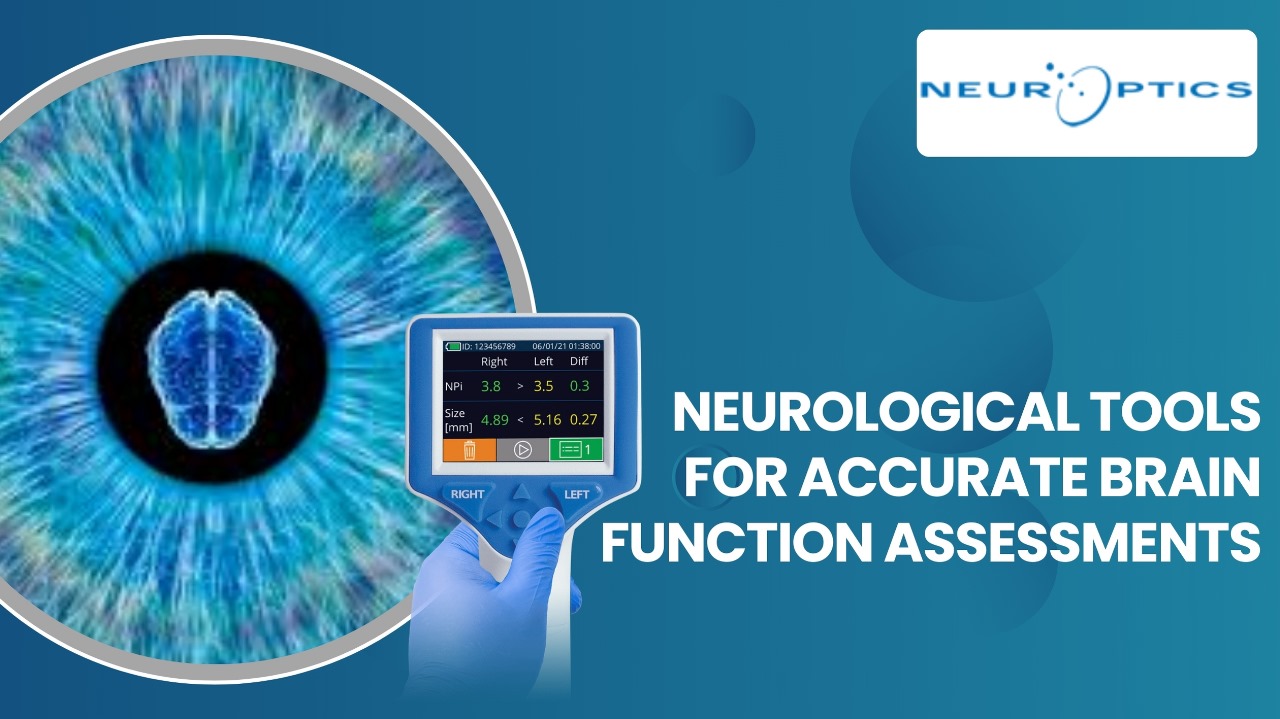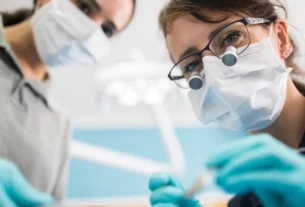Introduction
Advanced neurological tools improve the diagnostic accuracy of brain function assessment. Among these, the pupillometer has replaced the traditional methods of pupil measurement, providing an objective and quantitative method. The neuro exam is not complete without pupil evaluation as it is an integral part of detecting brain injuries, neurological disorders, and intracranial pressure abnormalities. However, variability in manual assessments results in inconsistent clinical decision-making.
The latest advancements in neurology are improving the clinical accuracy of brain function assessment. So far, the most widely accepted and practically use of these advanced tools is the pupilometer, which has replaced the traditional method of measuring the pupil by providing an objective and quantifiable method. Pupil examination forms an important core of any neurological diagnosis to detect brain injuries, neurological disorders, and abnormal increases in intracranial pressure. Nevertheless, inconsistency in manual assessment leads to inconsistencies in clinical decision-making.
The Role of Pupillometers in Neurological Assessments:
A pupillometer is a specialized device designed to measure pupil size and reactivity under controlled conditions. Unlike manual assessments that rely on subjective interpretation, modern neurological tools like the NPi®-300 Pupillometer offer objective pupil measurement, reducing errors and improving clinical outcomes.
Key Benefits of Automated Pupillometry:
- Counselled Pupil Measurement: Automated devices eliminate the interobserver variability of pupil evaluation and thus ensure the accuracy and reproducibility of pupil evaluation.
- Early Detection of Neurological Decline: Pupil reactivity can change following brain injuries, strokes, or increased intracranial pressure and allow for timely interventions.
- Integrated into Critical Care Protocols: A number of hospitals integrate the use of a pupillometer into their neuro-exam protocols to further patient monitoring.
- Pupil Reactivity Quantification: The Neurological Pupil Index (NPi) provides a numerical value for pupil evaluation, so this will be a standardized assessment metric for all clinicians to use.
Automated neurological tools provide an opportunity for healthcare professionals to be extremely accurate in diagnosing and monitoring neurological disorders.
Pupil Measurement and Its Clinical Applications:
The ability to measure pupil size and reactivity precisely is essential in various medical disciplines. Traditional methods involve a flashlight test, where clinicians observe pupil response manually. However, this approach lacks standardization, leading to inconsistent results.
Automated pupillometry has paved the way for rudimentary devices such as NPi®-300 pupillometer that records real-time data on pupil reactivity, providing quantitative parameters. The following fields greatly benefit from this advancement:
- Neurosurgery: Surgeons study pupillometric signs to monitor patients in the postoperative phase and detect early complications.
- Emergency Medicine: Quick examination of pupils helps assess traumatic brain injuries, strokes, and opioid toxicity.
- Critical Care Units: Pupillometry forms a part of neurological monitoring in the ICU for the following neurological patient tracking.
- Research and Clinical Trials: Quantitative measurement of pupils greatly benefits researchers in the field of neurology and forms an objective database for consideration in studies.
Such applications spread the importance of automated neurological instruments in contemporary medicine.
The Neurological Pupil Index (NPi) and Its Significance
One of the most valuable metrics derived from pupillometry is the Neurological Pupil Index (NPi). This proprietary algorithm analyzes pupil measurement data, assigning a numerical score to pupil reactivity.
Why is NPi Important?
Objective Evaluation: Unlike manual assessments, NPi provides a consistent, quantifiable value for pupil evaluation.
Early Warning System: A declining NPi score may indicate neurological deterioration, prompting immediate medical intervention.
Enhanced Clinical Decision-Making: Clinicians can make data-driven treatment decisions by integrating NPi into routine neuro exams.
The adoption of NPi in hospitals and trauma centers has improved the reliability of neurological tools, further advancing patient care.
NeurOptics: A Pioneer in Pupillometry
As the demand for precision in pupil measurement grows, NeurOptics has established itself as a leader in this field. The company specializes in developing advanced pupillometers, including the widely used NPi®-300 Pupillometer.
What Sets NeurOptics Apart?
Innovative Technology: Their neurological tools provide real-time, objective pupil measurement, ensuring clinical accuracy.
Global Recognition: NeurOptics’ solutions are trusted by healthcare professionals in over 30 countries.
Commitment to Research: The company collaborates with medical institutions to advance the field of pupillometry.
By integrating NeurOptics’ technology into clinical practice, hospitals and research centers can enhance pupil evaluation processes, leading to better patient outcomes.
Conclusion
Neurological tools play an important part in measuring brain function with accuracy. The pupillometer is one such important tool for objective pupil measurements in order for clinicians to do a more rigorous neuro examine. Analyzing pupil reactivity via this device lends valuable insight into neurological status, especially in critical care. Pupil examination for neurological status has long been a classic in assessing brain injuries, but conventional techniques have often been inconsistent.
These new automated neurological devices, such as the NPi®-300 Pupillometer, lend reproducibility and increase diagnostic accuracy. Such advances are of undoubted benefit to neurosurgery, emergency medicine, and the intensive care unit, where real-time and accurate assessment is vital. NeurOptics, a corporation focused on developing innovative solutions for the measurement of the pupil, is one of the leading innovators in this field. The technology is aimed to allow clinicians to make decisions based on evidence, therefore improving patient outcomes.




